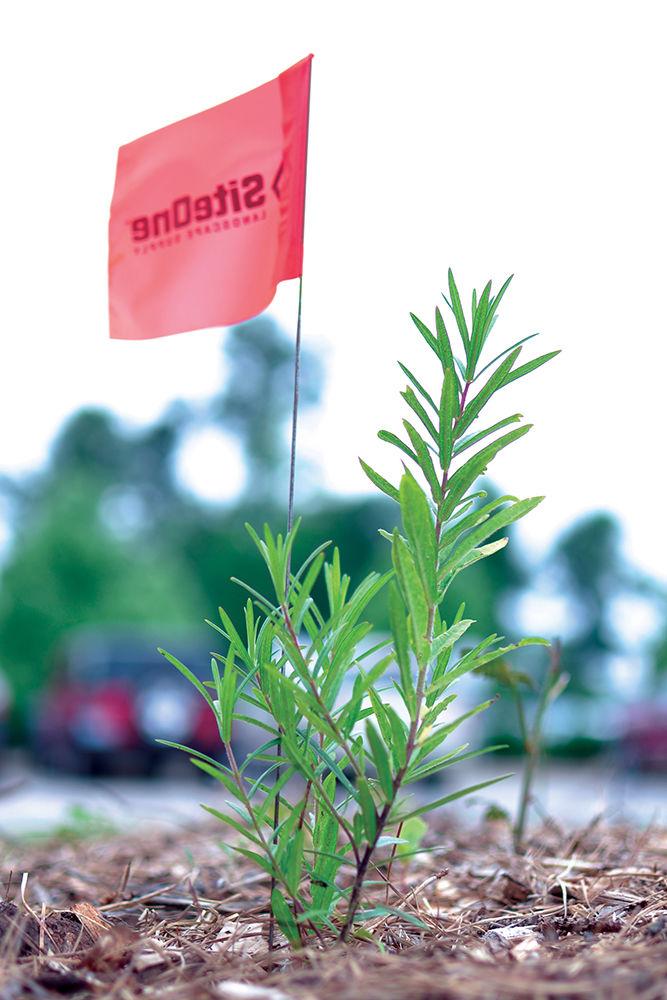At the Lonnie Poole Golf Course at NC State, 700 milkweed plants were recently planted. The plants were added in 15 different areas across nine holes. These plants weren’t planted to make the golf course look prettier. They were planted to potentially save a species.
The milkweed plant is the only plant monarch butterflies reproduce on, making it central to their population, which has been shrinking steadily since the 1990s. They will lay eggs on no other plant and their larvae must develop on the milkweed plant to survive. Without the creation of more milkweed habitats, the United States monarch population is at risk of dying out.
Uniquely situated at the center of this issue is Harold Coble, a crop and soil sciences professor emeritus. Coble works as a consultant for BASF, a Triangle-based chemical company. BASF has a project called Living Acres, which is designed to promote growing milkweeds in non-agricultural areas like golf courses. Fortunately, Coble also had a connection to Lonnie Poole Golf Course.
“I happen to serve on the university advisory committee for the Lonnie Poole Golf Course and so I brought this idea to that committee and they all bought in 100 percent,” Coble said. “They [BASF] thought it was a great idea to develop a monarch butterfly habitat on the Lonnie Poole Golf Course. Part of the reason why we did that is the design, construction and maintenance of this golf course has sustainability as a key focus area — sustainability in terms of conservation of water and land resources as well as economic sustainability. The development of this monarch butterfly habitat goes right along with that sustainability focus.”
Six months later, the teams were ready to go. BASF provided 500 milkweed plants and an additional 200 plants were donated to the project from a Kansas-based organization called the Monarch Watch. Coble and a team of around 20 volunteers planted the 700 milkweed plants. One volunteer was Arthur Rice, professor of landscape architecture and associate dean for graduate studies in the College of Design.
“I am a member of Lonnie Poole Golf Course Advisory Board and know professor Coble well,” Rice said. “The planting idea was discussed in the advisory board meeting and the board supported the idea. I spent about half a day setting milkweed plants in holes that were dug earlier and also spent some time assisting in the planting of wildflower seeds near the milkweed planting.”
Wildflowers were planted along with the milkweed plants to act as a source of nectar for the insects.
“We planted a mixture of four or five different species of perennial wildflowers,” Coble said. “The reason for planting those is that, when the butterfly come through, they don’t only require a place to lay their eggs and reproduce, which is what the milkweeds are for, but they also require an energy source in terms of nectar. We plant those wildflowers to provide the nectar for their energy.”
The monarchs require a lot of energy sources because of their unique migration pattern. The monarch butterfly is unique because it overwinters as an adult in Mexico and then, in early spring, migrates northward to southern Canada.
Coble said that once the habitat is established, visitors to the Lonnie Poole Golf Course will see monarchs twice a year. In May and early June, monarchs will be visible reproducing on their way north. In September, monarchs will be seen stopping by the course for wildflower nectar on the way back to Mexico.
Lonnie Poole is the first golf course that BASF has used for a habitat spot. Coble said he believes the golf course will become an educational resource moving forward to encourage other golf course and recreational areas to plant milkweeds. Thanks to volunteer efforts and the donation of the plants, the Lonnie Poole Golf Course did not need to spend any money on the creation of the habitat.













